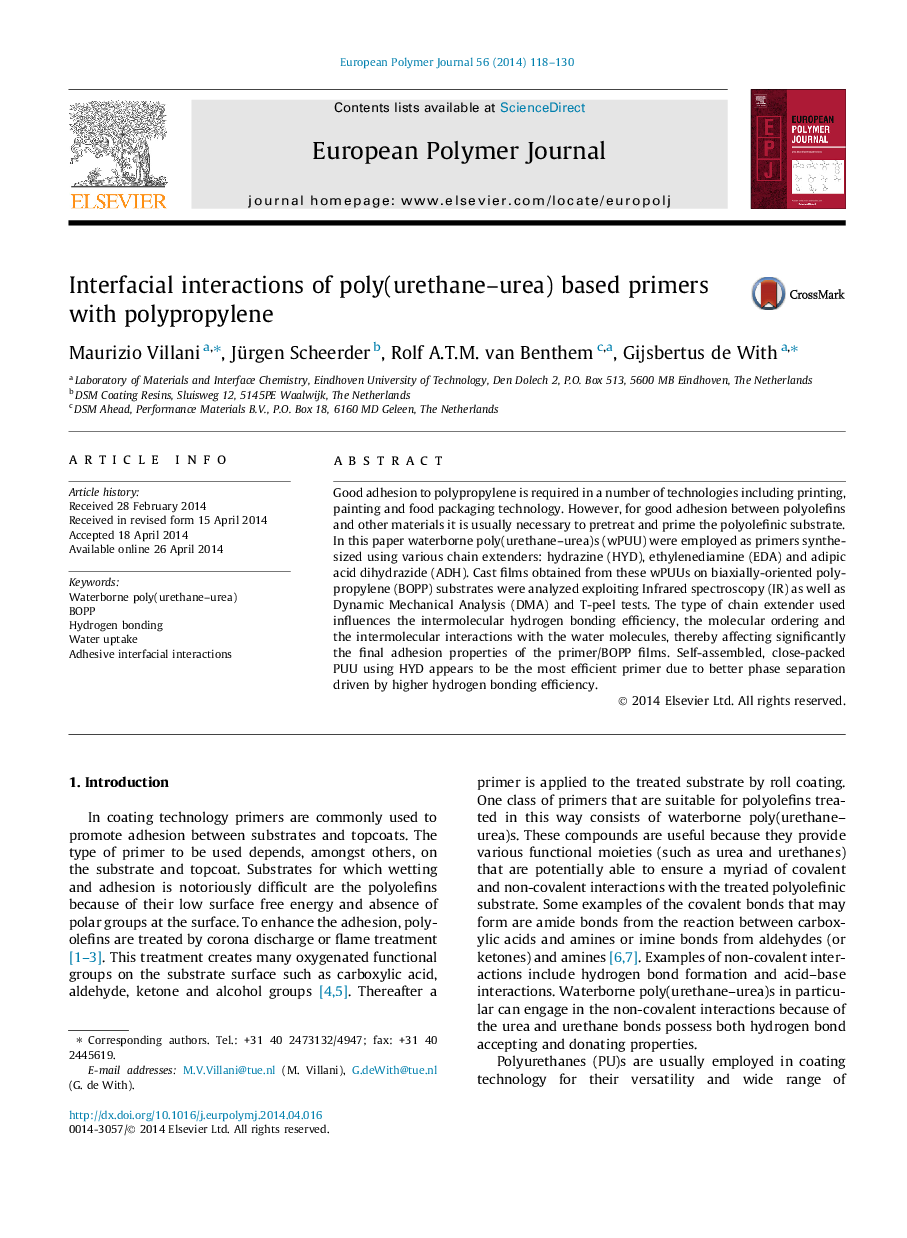| Article ID | Journal | Published Year | Pages | File Type |
|---|---|---|---|---|
| 1399443 | European Polymer Journal | 2014 | 13 Pages |
•Polyurethanes: ideal coatings for plastics due to their range of properties.•Limit the use of hydrazine as chain extender to promote eco-sustainable materials.•The various formulations show varying hydrogen bonding efficiency.•The hydrogen bonding efficiency affects the molecular organization.•The molecular organization influences the dry/wet adhesion properties.
Good adhesion to polypropylene is required in a number of technologies including printing, painting and food packaging technology. However, for good adhesion between polyolefins and other materials it is usually necessary to pretreat and prime the polyolefinic substrate. In this paper waterborne poly(urethane–urea)s (wPUU) were employed as primers synthesized using various chain extenders: hydrazine (HYD), ethylenediamine (EDA) and adipic acid dihydrazide (ADH). Cast films obtained from these wPUUs on biaxially-oriented polypropylene (BOPP) substrates were analyzed exploiting Infrared spectroscopy (IR) as well as Dynamic Mechanical Analysis (DMA) and T-peel tests. The type of chain extender used influences the intermolecular hydrogen bonding efficiency, the molecular ordering and the intermolecular interactions with the water molecules, thereby affecting significantly the final adhesion properties of the primer/BOPP films. Self-assembled, close-packed PUU using HYD appears to be the most efficient primer due to better phase separation driven by higher hydrogen bonding efficiency.
Graphical abstractFigure optionsDownload full-size imageDownload as PowerPoint slide
